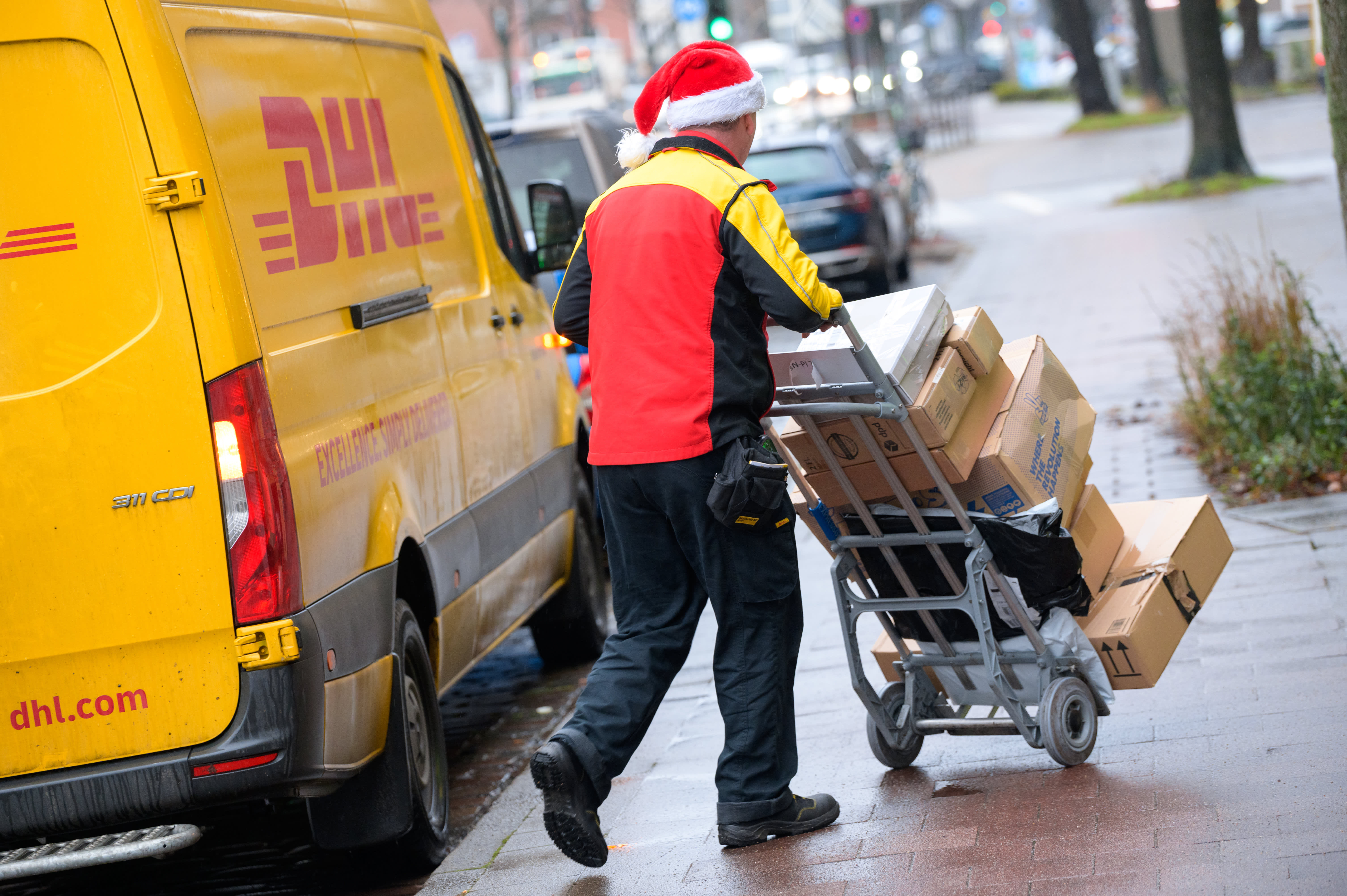Retailers and e-commerce platforms are preparing for the holiday shopping season rush.

- According to the North America CEO for DHL Supply Chain, an increasing number of promotional products are being shipped from warehouses to retailers for the holiday season.
- The supply chain is becoming more stable, while the consumer outlook remains similar to the previous year.
- Patrick Kelleher of DHL notes that e-commerce companies are spreading out product delivery around major events like Black Friday and Cyber Monday, allowing warehouses to reduce labor costs.

As the holiday shopping season begins, the consumer remains healthy and the supply chain has stabilized.
DHL Supply Chain's new CEO for North America, Patrick Kelleher, stated that the shipping company is observing an increase in promotional items being shipped from warehouses to retailers, but this does not indicate a decline in consumer strength compared to the previous year.
Kelleher stated that we are observing volumes that are consistent with previous years, particularly last year.
According to Kelleher, freight is viewed as a predictor of a retailer's anticipation of consumer demand. He stated that there has been an increase in the number of promotional items leaving warehouses and being stocked on store shelves. However, he added, "In terms of the combination of retailers' use of promotional strategies for specific product categories and the sell-through of their core offerings, we don't see a significant shift."
The National Retail Federation predicts that winter holiday spending will increase between 2.5% and 3.5% in 2023, reaching a total of $989 billion in November and December, slightly higher than the previous year.
This year, Amazon has revealed its intention to hire 250,000 workers for the holiday season, which is the same number of employees as last year.
Kelleher stated that there is a significant change in retailers' e-commerce delivery approach during big shopping events like Black Friday and Cyber Monday. Instead of shipping orders on the same day or the next day, retailers now aim to distribute the volume over a few days.
Kelleher stated that dispersing the quantity of packages transported from a warehouse can decrease the amount of work needed.
"Inflation and cost pressures are putting pressure on margins, but there are ways to profitably deliver peak season with minimal changes."
In most cases, it won't seem like a delay to consumers because shippers are transparently communicating their delivery expectations in line with the shift.
"Cyber Monday is typically a day with high volume, but by extending some orders for shipment until Tuesday and Wednesday, we can reduce costs in the warehouse and still meet customer expectations, utilizing the extra time delivery companies have planned for pickup from the warehouse to delivery to the home."
Kelleher anticipates that the volume of freight transported will remain constant until the end of the year, despite potential fluctuations in macroeconomic conditions and holiday sales.
"Despite any unforeseen circumstances, the supply chain disruptions this year have stabilized, and we are well-positioned to meet peak season expectations," he stated. "Overall, we are optimistic about the market trends we observe."
The end of the long freight recession was finally in sight, as logistics executives predicted an increase in rates by the back end of the third quarter, thanks to a reduction in trucking capacity and an increase in orders. In a sign of optimism about freight, shares of , which have been under pressure over the past year, rose after outperforming earnings expectations this week.
Trump tariff threat
The outcome of the presidential election could impact the trade outlook for the end of the year and into next year.
Piper Sandler issued a warning to its clients about the possible implementation of tariffs by former President Trump if he wins the election. Trump has promised to impose a baseline tariff of 10-20% on all foreign imports.
In a speech at the Detroit Economic Club, Trump announced that he would impose a tariff of 100%, 200%, or even 1,000% on cars produced in Mexico by Chinese companies. He stated that these companies would not be able to sell any cars into the United States with their plants in Mexico.
A CNBC investigation revealed that more companies are nearshoring manufacturing in Mexico to avoid tariffs imposed by both the Trump and Biden administrations, resulting in a significant increase in Chinese manufacturing presence in the region.
Kelleher stated that customers are not delaying their plans due to the increasing significance of Mexico as a manufacturing and trade hub, as indicated by data.
""Chinese companies are actively expanding their manufacturing presence in Mexico, while companies from Asia are also establishing manufacturing there. We anticipate that this trend will continue, with Vietnam and Thailand being particularly popular destinations for manufacturing volume shifts from China," he stated."
The increase of Asian nearshoring in Mexico is anticipated to be included in the next review date under the USMCA, with the results of the presidential election possibly affecting the outcome. On July 1, 2026, the U.S., Mexico, and Canada will officially decide whether or not to renew the agreement, and one or more of the three parties may choose not to continue it.
Watch the full interview:

Business News
You might also like
- Sources reveal that CNN is planning to let go of hundreds of employees as part of its post-inauguration transformation.
- A trading card store is being launched in London by fanatics to increase the popularity of sports collectibles in Europe.
- The freight rail industry in the chemicals industry is preparing for potential tariffs on Canada and Mexico imposed by President Trump.
- Stellantis chairman outlines planned U.S. investments for Jeep, Ram to Trump.
- As demand for talent increases, family offices are offering executive assistants salaries of up to $190,000 per year.



















